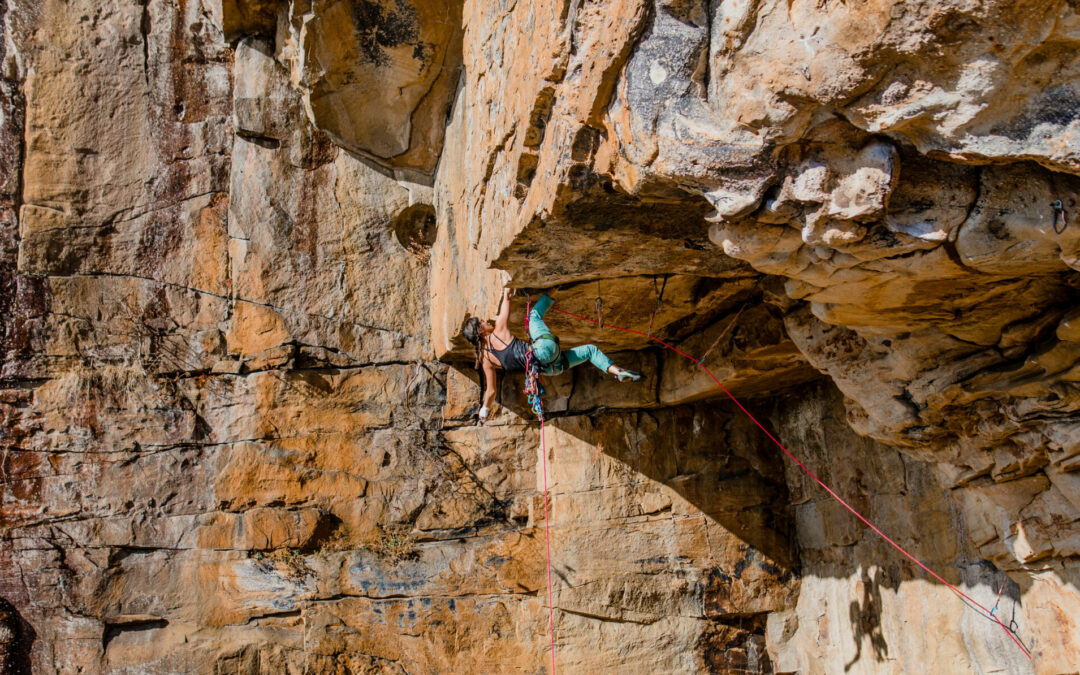Tennessee’s outdoor climbing scene is not just a haven for adventure seekers but also a significant economic driver for the state. With breathtaking landscapes and world-class climbing, it’s no wonder that Tennessee attracts a substantial number of climbing enthusiasts each year. Let’s delve into the impressive economic impact of climbing in Tennessee and understand how climbing’s growth in our region is a win-win for both the economy and environmental stewardship.
Climbing’s Financial Footprint in Tennessee
Results from the 2023 Economic Impact of Climbing Destinations in Tennessee show the state welcomed around 113,000 outdoor climbing visitors, bringing a considerable amount of money into the local economy. Traveling climbers annually spend a staggering $14.3 million in Tennessee. This spending is primarily funneled into lodging and food services, particularly in the vibrant Chattanooga area, known for its proximity to premier climbing spots.
This influx of climbers translates to significant economic benefits:
- Job Creation and Wages: Climber spending supports 126 jobs in Tennessee, with climbing-related activities contributing $4.2 million in wages annually for Tennesseans. These jobs span various sectors, including hospitality, retail, and transportation, illustrating the broad reach of climbing’s economic impact.
- High-Earning Visitors: The climbing community is characterized by a demographic with substantial economic power. An impressive 80% of climbers hold bachelor’s degrees, and 30% boast incomes exceeding $100,000 a year. These high-earning visitors often stay overnight—66% of climbers extend their visits, further amplifying their economic contributions.
The Role of Stewardship in Sustaining Economic Benefits
While the economic impact of climbing is undeniably positive, it must be balanced with responsible stewardship of climbing areas. The Southeastern Climbers Coalition (SCC) and the Access Fund have long championed this approach, emphasizing that the conservation and sustainable stewardship of outdoor climbing environments is crucial for maintaining and growing any future economic benefits. “Climbers showing up to stewardship events and giving back to the crags they love is such an important aspect of rock climbing”, says Kate Hanes, Stewardship Director at SCC. “We are so fortunate to have such a strong community in the Southeast that is willing to roll up their sleeves and get to work making our climbing areas sustainable”.
Stewardship efforts include:
- Maintaining Climbing Areas: The SCC and Access Fund work tirelessly to maintain and improve climbing areas, ensuring they remain safe, accessible, and enjoyable for climbers. This includes building and maintaining trails, installing necessary facilities, and promoting Leave No Trace principles.
- Education and Advocacy: Both organizations focus on educating climbers about sustainable practices and advocating for policies that protect natural climbing areas. By fostering a community that values and practices environmental stewardship, they ensure that climbing areas can support increasing visitor numbers without degrading.
Volunteer Engagement: Engaging volunteers in stewardship activities not only helps maintain climbing areas but also builds a sense of community and responsibility among climbers. Events like trail days and clean-up initiatives are integral to these efforts.
The Economic and Stewardship Synergy
The positive economic impact of climbing empowers the SCC and the Access Fund to expand their stewardship activities. With more resources at their disposal, these organizations can enhance their efforts to protect and preserve climbing areas, creating a positive symbiotic relationship of economic and environmental benefits. “As the climbing community continues to grow, the need to scale up local stewardship efforts continues to increase”, adds Daniel Dunn, Access Fund’s Southeast Regional Manager. “Additional funding to increase Access Fund and SCC’s work in the region goes right back to improving climbing areas, making them sustainable for future generations”.
Climbers’ spending supports local economies, which in turn can fund stewardship initiatives that ensure climbing areas remain pristine and accessible. This synergy highlights the interconnectedness of economic health and environmental stewardship, demonstrating that supporting climbing is not just good for the economy but essential for preserving the natural beauty that attracts climbers in the first place.
So what’s the economic punch-line?
The economic impact of climbing in Tennessee is a testament to the importance of this outdoor activity. With millions spent annually by climbers and supporting local businesses, climbing is a vital economic force in the state. However, we must remember that these benefits are inextricably linked to the responsible stewardship and sustainable access of climbing areas. The efforts of the Southeastern Climbers Coalition and the Access Fund ensure that as the climbing community grows, it continues to contribute positively to both the economy and the environment. Together, we can keep Tennessee’s climbing areas thriving for generations to come.
Author: Caleb Timmerman





Trackbacks/Pingbacks